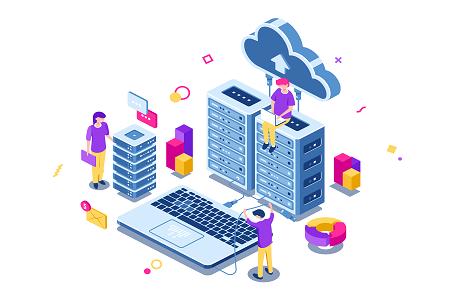Salient IT Services › Data Backup Woodland
A brief guide to data backup in Woodland
Data backups are rather like insurance policies. You take them out hoping that you’re not going to need them but knowing that, in this instance, organizing and paying for something you’re hopefully not going to need is far better than taking the risk of being without it if you do. While the principles of data backups are fairly straightforward, they benefit from effective management to keep costs down and ensure you stay in compliance with the law. With that in mind, here is a brief guide to data backup in Woodland.
Excess data can get expensive
You are probably mandated only to collect sensitive data for a specific purpose and only to keep it for as long as you need it. Even if you’re not this is a very sensible policy for all kinds of reasons, especially for reducing your exposure to risk. You can, however, keep non-sensitive data for as long as you like. This can be helpful, but it can also lead to the risk of data building up purely and simply because nobody wants to take responsibility for hitting the delete button.

The first point to note is that if you are already working in the cloud, this data is costing you money in excess storage costs. If you compound this by continually backing up the unnecessary data, then you are going to incur the costs of transporting and storing it, plus, your entire data backup process will be slowed down, which could lead to other costs, for example staff being unable to work effectively.
This means that you need a process for identifying what data is actually being used versus what data is just sitting idle. Then you need a process for identifying what data is sitting idle because it is being kept for a specific, long-term purpose, such as legal compliance, and what data is sitting idle because nobody wants to be the one who takes ownership of deleting it.
If you’re uncomfortable about deleting data unless you’re sure it’s not needed or wanted, try putting it into archive. Even if you keep it there for several years, you’re probably still going to save yourself money and hassle as compared to backing it up all the time.
The 3-2-1 backup strategy still holds good
The traditional approach to data management is to hold three copies of your data, including your production copy, over at least two media, with one copy kept offsite. If you back up to a (different) cloud, then you check all three boxes and save yourself the hassle of transporting tapes off-site (and bringing them back again if you need them).
There are two good reasons for sticking to at most three copies of your data. The first is that the more copies of sensitive data you hold, the more risk you have to manage and while regulators appreciate that companies do need to backup data, they don’t (or shouldn’t) need endless copies of it. The second is quite simply that each backup you take will incur a cost, so you want to make sure that the cost is commensurate with the benefit.
There is a difference between data backup and disaster recovery
A disaster-recovery solution involves both a data backup and everything necessary for staff to make use of the data. You may be able to combine your data backup and disaster recovery solutions, but this may not be as straightforward as you might think.
Basically, if your data is sensitive, then you either need to look for a public-cloud provider which can handle sensitive data or set up a private cloud both to store your data backups and to be on standby if anything happens to your main private cloud. Using a public cloud may be a possibility as public-cloud providers are doing their very best to demonstrate compliance with at least the mainstream laws and compliance programs, but you will have to decide for yourself whether or not that’s the right option for you.
The other alternative would be to encrypt your data on your own servers, and keep it encrypted until it was either used or deleted. This would allow you to use a public cloud to store even sensitive data. You would, however, then need to ensure that you could import and export data to the public cloud platform not just from your main private cloud but from your data-recovery cloud. This would be necessary to keep everything in sync if you needed to switch between one cloud and another.
If you’d like to speak to a reputable and experienced data backup provider in Woodland, please click here now to contact Salient IT.



